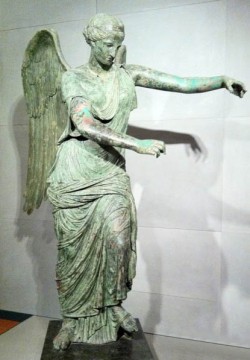
1200 B.C. The first settlement was made, probably by the Liguri tribe, on the Cidnean Hill.
4th c. B.C. The Gallic Cenomani tribe settled at the foot of the Cidnean Hill and made the town their centre.
89 B.C. Brixia became a Roman colony.
27 B.C. Emperor Augustus conferred the title “Colonia Civica Augusta” to the town.
Under the Roman Empire the town became one of the main Cisalpine centres and took on growing importance as a trading and manufacturing centre.
568-773 The town was one of the 36 Lombard duchies in Italy.
774-888 the town passed into the hands of the Franks.
12th-13th c. Comunale Period – Brescia was a Guelph town between the two Ghibelline towns of Bergamo and Cremona ad was often involved in border fighting. Faced by the danger of Federico Barbarossa, it joined the Lombard league.
14th-15th c. The Period of the Signorie was tumultuous for Brescia: the city was fought over by various families (Angioini, Visconti, Malatesta) who dominated it for different periods.
1426 Brescia became part of the Venetian Republic where it remained, with short breaks, for four centuries.
1797 After rebellion in Venice the Brescian Republic was established and became part of the Cisalpine republic under the Treaty of Campoformio signed by Napoleon.
1814-1859 Brescia passed under the Lombard Veneto rule but in 1849 during the heroic “Ten Days”, which won it the name of the “Lioness of Italy”, it rebelled against the Austrians (who abandoned it 10 days later).
1859 Brescia was annexed into the Kingdom of Italy.
1943 – 1945 Salò became the capital of the Social Italian Republic which included Brescia until the fall of Fascism.
Photo: Andrew Nash
